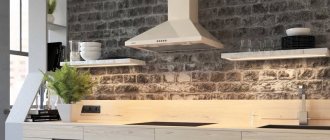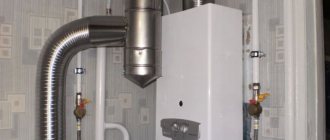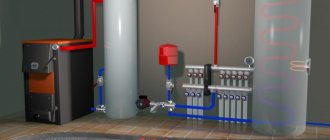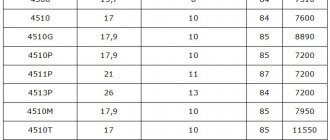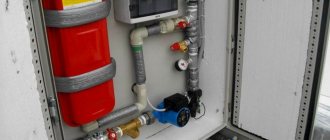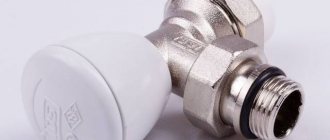When taking care of your health, it is important not to forget that even common household factors influence it. For example, natural gas from kitchen stoves may contain impurities of heavy metals, formaldehydes, carcinogens and radioactive substances. The gas burns, and harmful compounds remain in the air. In addition, during operation of any (gas or electric) stove, many odors and particles of fat are released.
In order not to inhale harmful substances and not to carry the aroma of dinner all day after cooking, it is worth installing exhaust equipment. Its work will be most effective if you study the intricacies of the devices in advance and take them into account when purchasing. How to choose a kitchen hood over the stove, read our article.
Choosing a kitchen hood based on operating principle
All hoods have common parts:
- exhaust duct;
- fan;
- filters;
- Control block.
Exhaust equipment passes through air mixed with combustion products , soot, steam and drops of fat. The suction power can be adjusted depending on the intensity of contamination.
According to the method of operation, exhaust devices are divided into flow, circulation and mixed.
Flow type hoods
In flow-through models of kitchen hoods, an air duct pipe is added to the list of parts . In apartment buildings it is connected to the general building ventilation system. In a private house, where there are no centralized ventilation ducts, the air duct exits the room into a hole in the wall. Polluted air enters the box with the help of a fan, passes through filters and goes through the pipe into the ventilation.
The operation of such a hood requires constant air renewal . Under the influence of the created draft, it easily penetrates into the room. Access is provided by open windows or doors to other rooms.
It is optimal when the kitchen has several ventilation hatches . Exhaust air is discharged into one of them, clean air enters from the others. There is no need to keep windows or doors open all the time. If there is only one ventilation hole, you can also use it for air flow. To do this, the kitchen hood air duct pipe must be smaller in diameter than the size of the hatch. The exhaust air will go into the air duct, and fresh air will come out of it.
In flow-type devices, external grease filters are used to protect the inside of the box and the fan . They are soft padding polyester, acrylic or non-woven, which periodically require replacement. Reusable cassette filters are made of metal; they simply need to be washed with water and detergent when they become dirty.
Models without filters are easily covered with grease and dust , so they must be cleaned regularly.
Circulating hoods
Devices of this type are equipped with a more powerful fan motor, grease and carbon filters that retain fumes and unpleasant odors.
The air, having passed through a two-level cleaning system, returns to the room. Such kitchen hoods operate noisier than flow-through ones. Carbon filters should be changed according to the operating instructions for the hood. The average replacement time is 2-3 months.
Circulation models are used when there is no general house ventilation in the kitchen or its performance is unsatisfactory, or the ventilation hatch is distant from the stove.
Mixed type devices
These hoods have an air duct and an additional built-in carbon filter system . They work in a flow and circulation way. During the cold season, it is convenient to switch the mixed model to circulation mode to keep the room warm.
Hood type
The units differ in their mode of operation, namely, through which the air is directed. There are 2 types of devices:
- ventilation hole;
- recycling.
Devices require connection to a ventilation duct
in the house to release exhaust gases outside.
But before calculating the power, it is necessary to take into account the channel capacity. If the house is old and the ventilation shaft is overcrowded, even if you buy a durable hood (according to calculations), it will not be able to release air with full force. And your neighbors in your kitchen will throw waste gas into the room. In such cases, you can create a separate outlet
for ventilation from the outside by making a hole in the wall.
The devices have a filter system
and do not require connection to a ventilation shaft. In most cases, cleaning takes place in two stages. Firstly, the first filter absorbs large particles: steam, grease and fumes. The air then passes through a carbon filter, which removes all odors and is returned back into the room.
Filters may cause some resistance during pumping, which should also be taken into account when calculating hood efficiency. The recommended increase in this value for such devices is about 30 - 40%.
Differences and features of kitchen hoods
The variety of kitchen hoods is determined by many characteristics : models differ in design, size, and installation method. Noise level and additional functions are also important distinguishing features of exhaust devices.
Design
The design features of kitchen hoods are divided into two types:
- Flat. They are a low rectangular box. There are corner models and inclined ones, located at an angle to the slab.
- Dome. Made in the form of a dome, pyramid, cone or hemisphere. Requires free space around the dome. It also takes up more space than flat models.
Mounting method
Types of exhaust devices according to installation method:
- Hanging. Attached to the wall.
- Built-in. Completely covered by the façade of kitchen furniture, mounted in a cabinet.
- Retractable. The working area of a wall-mounted kitchen hood can be adjusted using a retractable hood. When folded, the headset is flush with the doors.
- Island. Built into the ceiling. The duct usually goes directly to the street through the roof. Used in spacious rooms.
It can be useful:
How to install a hood correctly
How is the hood connected to electricity?
How to arrange sockets in the kitchen to connect appliances
Hood dimensions
The width of the exhaust device must match the width of the slab for effective operation. In this case, all combustion products, evaporation and grease will promptly enter the hood outlet. Standard sizes are 50, 60, 90, 100 and 120 cm.
The distance from the gas stove to the hood should be 75–85 cm, from the electric hob - 65–75 cm. If the device is installed higher, a model with increased power is required. If the mount is too low, the device may be damaged by exposure to high temperatures and interfere with the cooking process.
The front edge of the exhaust duct should not extend beyond the stove, otherwise it will become an obstacle when performing kitchen work.
Material and noise level
Metal, plastic, glass are used for the body and parts of the device.:
- Among metal products, aluminum exhaust equipment is most often found. It is light, durable and non-corrosive. Does not require special care and looks quite attractive.
- Kitchen hoods made of stainless steel are durable, look stylish and modern. The parts of the device are not susceptible to the harmful effects of kitchen conditions - humidity and temperature changes.
- A hood made of solid glass or glass with metal will add originality to the interior. Such devices are highly durable and easy to clean.
- Plastic hoods are popular due to the lowest price among all devices. High-quality plastic is not inferior in properties to metal.
The noise level is determined by the performance of the device and its dimensions . The operation of a fan equipped with a powerful electric motor is more audible than two motors of lower power.
Reference. The noise level of a kitchen hood is indicated in the technical data sheet of the device.
To block the sounds of fans operating, noise insulation is provided inside the exhaust equipment. The fans themselves also have a special design that ensures quieter operation.
Controls and lighting
The operation of the kitchen hood is controlled using the control panel . It happens:
- analog, consisting of buttons and relays;
- electronic - with touch buttons and LCD screen;
- remote, equipped with a remote control.
Built-in lighting also varies . Provided with the following elements:
- Incandescent lamps. They have a reddish light and high energy consumption compared to other species.
- Fluorescent lamps with a bluish light. Requires 90% less energy than incandescent lighting.
- Halogen. Such lamps have a natural shade of illumination, close to that of the sun. Energy efficient.
Additional functions
What additional functions are equipped with kitchen hoods?:
- Assessment of air pollution levels. Allows the device to independently regulate its operating power depending on changes in the concentration of impurities in the air.
- Interval switching on. Used for regular ventilation of the kitchen. The exhaust equipment turns on automatically after a specified period of time.
- Storage space. Some models are equipped with niches or shelves for placing small items.
Types of hoods by installation methods
When selecting a model, it is necessary to take into account that the distance from the gas stove to the hood should be maintained in the range of 750...850 millimeters. With lower values and operation at full power, the flame of the burners may become stray and unstable. Also, a small height above the hob is dangerous due to the possibility of ignition of the fat accumulated in the hood filter.
Depending on the shape, installation method and design, the following types of hoods for gas stoves are distinguished:
- wall-mounted systems - easily mounted under a hanging cabinet, usually equipped with acrylic anti-grease filters and have a low price;
- built-in type - mounted in a wall cabinet and often equipped with retractable panels;
- wall-mounted models - installed openly and attached to the wall;
- corner hoods attached to two walls are a type of wall hood;
- powerful dome models – they look stylish and can be fixed to the ceiling or walls;
- island hoods with a supporting air duct - attached to the ceiling and used when placing a gas hob in the center of the room.
Existing tabletop systems often do not allow maintaining optimal distances to the burners; they are of the recirculation type and are not recommended for gas hobs.
Wall-mounted models often allow two modes of operation, including exhaust and recirculation. For gas appliances, an exhaust connection is required.
We remind you that recirculation does not remove carbon dioxide and therefore does not ensure safety when operating gas appliances.
Built-in models easily fit into the existing kitchen design, provide hidden installation, and the ability to hide air ducts. Wall, dome, island systems are installed independently and are a noticeable element of the interior. Nowadays, there are many models of them made from different materials, with a variety of colors.
Finding a hood over a gas stove that fits harmoniously into the decor will not be difficult. Metal models are heavier and more expensive, but they withstand heat better, are more durable and reliable. The use of glass in the design is an interesting design solution, but requires greater care during installation. Lightweight plastic models are easier to install and cheaper. However, metal solutions are more reliable.
The best manufacturers
Modern and reliable models of the highest price category are offered by the German brands Bosch, Siemens and Italian Elica. Impressive design and quiet operation characterize Cata hoods. Electrolux products demonstrate reliability and excellent functionality. Krona models are distinguished by low noise with significant performance, timer switching, and electronic control.
Selection rules
Let's look at how to choose the right hood for a gas stove:
- calculate the required productivity;
- we select a model based on the situation, the size of the kitchen, the possibility of air ducts, design requirements, features and characteristics of the stove;
- It is worth analyzing reviews of the model and paying special attention to products from well-known manufacturers;
- when choosing, pay attention to the compliance of the passport data with the required characteristics;
- We prepare tools and accessories for installation work;
- We install the hood with the connection of air ducts and fans to the electrical network.
Performance calculation for the right choice
When thinking about which hood is best to choose for the kitchen, it is important not to ignore its throughput or performance . It shows how many cubic meters of air the device processes per hour.
The productivity of various models varies from 150 to 1300 cubic meters per hour. For optimal operation of the equipment, this indicator is calculated depending on the dimensions of the kitchen.
Based on the requirements of sanitary standards , in 1 hour all the air in the kitchen room should change 10–15 times. The average value of 12 is taken as the increasing coefficient. The loss of power in the exhaust duct is provided for by a reserve coefficient of 1.6.
First, determine the volume of the kitchen : the length is multiplied by the width and height. The resulting figure is multiplied with coefficients. The performance calculated in this way is approximate.
You can increase accuracy using additional calculations:
- find out the volume of furniture according to the specified parameters (length, width, height) and subtract it from the volume of the room before multiplying by a coefficient;
- for a circulation type kitchen hood, add another 20% (the resulting performance is multiplied by 0.2);
- if the air duct has bends, add 10% to each elbow;
- the hood over a gas stove should work 15% more powerful than over an electric one;
- if food is prepared daily or smoking is allowed indoors, it is worth adding another 200 cubic meters per hour to the productivity value.
Conclusion
When installing the hood, it is necessary to monitor the coaxiality of the location of the equipment and the stove - displacement of the device relative to the source of pollution will make the choice of the location height incorrect, since the intake will not be able to cover the entire area of pollution.
The height of the hood above the gas stove is an important factor in ensuring the efficient functioning of the equipment. Underestimating the parameter leads to a risk of fire and a decrease in the comfort of servicing the stove; overestimation leads to insufficient air purification.
Why are kitchen hoods needed over a gas stove?
The main difference between a gas stove and an electric one is that the heat for cooking comes from an open fire.
After the combustion of natural gas, the room remains:
- small organic particles;
- formaldehyde;
- water vapor;
- benzene;
- radon;
- heavy metal compounds.
All these substances are released in negligible quantities . Each of them separately does not pose a health hazard. However, their mixing in combination with the cumulative effect can contribute to a decrease in immunity and the development of respiratory, allergic, and oncological diseases.
Household gas is odorless, and special aromatic compounds containing sulfur are added to detect leaks. Getting such compounds into the kitchen can cause headaches and nausea.
Combustion products are released into the air even when the stove is turned off . During operation of the device, they settle and accumulate on parts of gas equipment. The walls and ceiling can also be damaged - a layer of soot from an open fire accumulates on them.
Installing a kitchen hood over a gas stove will help solve these problems . It is important to regularly and promptly remove the remaining burnt gas from the premises and prevent an increase in the concentration of harmful compounds in the air.
Varieties
The question at what height to hang the hood is very important, but it is no less important to decide on its design features. Kitchen hoods are divided not only by operating principle, but also by appearance. The following varieties are distinguished:
- Hanging. This hood usually has a flat body and is mounted on the bottom of a kitchen wall cabinet directly above the stove.
- Built-in. It is intended for installation inside a cabinet. These hoods have many advantages, and the main feature is that the set looks organic and holistic, since the hood body is hidden behind the facade of the pendant module.
- Wall-mounted. This is a classic type of device. The hood above the stove is mounted on the wall above the hob. Can be made in different styles and materials.
- Corner. Suitable if the stove is located in the corner of the kitchen unit. These are quite large models, unlike the same built-in or hanging ones.
- Ostrovnaya. The most expensive and stylish option among the above. If the kitchen is large enough and involves placing an island with a hob and oven in the center, then an island hood will become an indispensable part.
According to the shape of the air intake and its design, devices are divided into: flat, horizontal, vertical, dome-shaped. The flat design has a lower part in the form of rectangular blinds, which in some cases are limited by low sides. Such hoods over a gas stove require horizontal installation above the hob at the required height. The width is 500 or 700 mm.
The vertical view involves an inclined placement of a rectangular exhaust device. The domed one is the most common. It looks like a tent installed over a stove. Typically available in widths of 500, 600, 700, 900 and 1200 mm.
The design features of hoods also suggest division into types: stationary, removable, retractable. The latter are most often used in flow-through systems and involve a retractable air intake that can be removed when necessary, for example, during cooking.
How to choose the right hood for a gas stove: main points
When the need for an exhaust hood is obvious , it remains to decide which hood is best for a kitchen with a gas stove.
When calculating the required power of the device , it is important to increase the resulting number by another 15%.
To be sure that harmful combustion products are removed from the room, preference should be given to flow-type hoods . They not only purify polluted air, but completely remove it from the kitchen.
If you install a dome-type device , the remaining burnt gas rising from the stove will quickly be under the influence of draft and enter the air duct, then be discharged outside.
Considering the presence of open fire, when choosing a body material, you should choose metal models .
Attention! In kitchens with a gas stove, along with a hood, it is advisable to install a forced (mechanical) ventilation system. In this case, not only an effective outflow of polluted air will be ensured, but also an influx of fresh air.
What should be the best kitchen hood for a gas stove?
Paying attention to the information presented above, you can derive from it a number of recommendations and tips on what a suitable hood for the kitchen should be. There are several main criteria that you need to pay attention to:
- Size. It can range from 45 cm to a meter, if space and the design of all kitchen fittings allow it. The main thing to remember is that the larger the cooking surface, the larger the equipment you will need.
- Operating mode. It is always worth paying attention to how many there are and whether they can be used at the same time.
- Filter system. All sellers know exactly what kind of kitchen hood should be: have regular mesh filters and also carbon filters.
- Control Panel. This is a purely personal matter of taste and preference. Some people prefer a modern touchpad, while others prefer a push-button one.
- Additional functions. It is quite simple to answer the question of which kitchen hoods are the best. They should contain many additional functions (timer, halogen backlight, interval switching, etc.).
Knowing what types of hoods for gas stoves there are and the main features of each type of such appliances will make it much easier to make the right choice.
How to hang a hood over a gas stove yourself
Installation of a flat or dome-type hanging hood is best left to a professional. Having certain skills, you can cope with this task yourself.
The work is carried out in several stages:
- Measure the distance between the mounting holes on the back of the device (usually there are 4 - 2 on each side). Transfer the readings to the wall. If the exhaust equipment kit includes a paper mounting template, it is more convenient to use it.
- Drill holes for dowel nails and secure the hood to the wall with them. Check with a level whether the device is level.
- Install the air duct pipe.
- If the wall is uneven or there are pipes in the area where the hood is supposed to be mounted, this can be corrected by attaching wooden slats to the wall and mounting the device on them. A more hygienic and safe option is to install the hood on stainless steel plumbing studs.
For the built-in option, first mark the contours of the hood , attaching it to the bottom shelf of a previously removed cabinet. The opening is cut out with a jigsaw. On the top and middle shelves, mark and cut out the air duct holes, if any.
The cabinet is hung on the wall, the exhaust device is attached to the cabinet walls with self-tapping screws through through holes. Install the air duct.
Reference. The air duct pipe from the hood to the ventilation duct should follow the shortest path. Its average diameter is 15 cm.
Smooth pipes are preferable to use because they do not create air resistance. For the same reason, the number of bends in the duct should be minimized. This will avoid loss of power.
A horizontally running pipe is less efficient than a similar one installed at an angle of 10 degrees.
The need for a hood in a kitchen with an electric stove
An electric stove does not leave behind harmful combustion products, but soot from oil during frying contains carcinogens . To avoid constant inhalation of these substances, it is better to immediately remove contaminated air from the room using exhaust devices.
Speaking about the fact that in small kitchens a hood is not needed and its functions can be handled by an open window or ventilation hatch, it is worth remembering the layout of small apartments. Most often, the kitchen is closely adjacent to the hallway, where outerwear hangs, or to the bedroom. Bed linen, curtains or the contents of a wardrobe will absorb odors faster than they can get outside and into the ventilation.
Condensation and grease particles settle on kitchen furniture, walls, ceilings, and are absorbed into wallpaper and textiles. Exhaust equipment will keep your kitchen fresh and clean longer and will delay the need for cosmetic repairs.
Features of exhaust systems
In general, a kitchen hood is a structure that provides forced intake of contaminated air in order to clean it from various fumes, products of incomplete combustion of gas, smoke components, suspended impurities and odors that form above the stove during cooking. Exhaust systems contain a housing, an air intake, a set of filters and electrical ventilation elements.
The main difference between the two types of hoods is that an exhaust hood requires a duct to remove air from the kitchen. Recirculation, on the contrary, purifies the air using a carbon filter and supplies it back to the kitchen
According to the principle of operation, hoods are divided into two main types:
- The flow-through type of device is based on the forced removal of contaminated air into the ventilation system of the house, i.e. outside the kitchen. Such a system ensures almost complete removal of contaminants from the room in a short time, but requires an influx of fresh air from the outside.
- The circulation type of hood does not remove air from the room, but cleans it by passing the contaminated air through a filter system and then returning it to the kitchen. The main advantage of this type is the absence of additional highways; and the disadvantage is an increase in the time for complete air purification.
